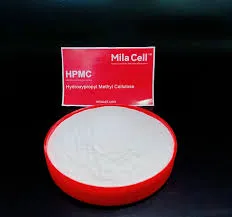
снеж . 29, 2024 19:30 Back to list
Current Market Trends and Pricing for Hydroxyethyl Cellulose in 2023
The Pricing Dynamics of Hydroxyethyl Cellulose Trends and Analysis
Hydroxyethyl cellulose (HEC) is a non-ionic, water-soluble polymer derived from cellulose. It is widely used in various industries, including pharmaceuticals, cosmetics, food, and construction, due to its thickening, binding, and film-forming properties. The price of hydroxyethyl cellulose has seen fluctuations over the years, influenced by various factors such as raw material costs, production processes, market demand, and economic conditions.
Understanding Hydroxyethyl Cellulose
HEC is primarily produced from cellulose derived from natural sources like wood pulp or cotton. The cellulose is chemically modified to introduce hydroxyethyl groups, which enhances its solubility in water and extends its applications. In pharmaceutical formulations, HEC is often utilized as a thickener and stabilizer, ensuring the uniformity and stability of gel and cream products. Its use in cosmetics includes lotions and creams, where it provides a smooth texture and enhances the product's feel.
Factors Influencing HEC Prices
1. Raw Material Costs The cost of cellulose is a significant determinant in the pricing of hydroxyethyl cellulose. Fluctuations in the prices of wood pulp and other raw materials due to supply chain disruptions, climate change, and shifting demand can lead to corresponding changes in HEC prices.
2. Production Techniques The manufacturing process of HEC is complex and requires significant energy and technological input. Innovations in production methods that enhance efficiency could lead to lower production costs, ultimately affecting market prices. Conversely, increases in energy prices can escalate production costs, driving up HEC prices.
3. Market Demand The demand for HEC is driven by its diverse applications. With the growing skincare and cosmetic industry, the demand for HEC as a thickening agent has seen an upward trend. Similarly, the rise in construction activities globally has increased the demand for HEC in cement and adhesive formulations. When demand surges and outpaces supply, prices are likely to rise.
4. Geopolitical Factors Political instability in major manufacturing regions can disrupt the supply chain, leading to price hikes. Trade policies, tariffs, and regulatory changes can also impact the cost of HEC and its raw materials, influencing the overall market price.
hydroxyethyl cellulose price

5. Economic Conditions Economic growth often correlates with increased industrial activity, which can drive up the demand for hydroxyethyl cellulose. During periods of economic downturn, demand may wane, putting downward pressure on prices.
Recent Trends in HEC Pricing
As of late 2023, the hydroxyethyl cellulose market has been characterized by moderate price stability following a substantial increase observed in the years preceding it. For instance, due to the COVID-19 pandemic, the demand for HEC surged in sanitizers and cleaning products, leading to a significant price spike. However, as supply chains stabilize and production resumes normalcy, prices have somewhat aligned to reflect pre-pandemic levels.
In the cosmetic industry, there has been a notable shift towards natural and sustainable ingredients. This trend could influence the composition and pricing of HEC, prompting manufacturers to adopt more environmentally friendly practices while balancing cost-efficiency. Furthermore, as the market for biodegradable products expands, investment in research and development of new cellulose derivatives could create alternative pricing structures.
The Future Outlook
Looking ahead, the hydroxyethyl cellulose market is expected to evolve with changing consumer preferences and technological advancements. As sustainability becomes a key driver of purchasing decisions, companies that prioritize eco-friendly production methods may find a competitive edge, even if it leads to higher production costs.
Emerging markets in Asia and Africa present significant opportunities for growth, driven by industrialization and urbanization. As these regions continue to develop, the demand for various applications of HEC may see a robust increase, potentially affecting global pricing structures.
Conclusion
The price of hydroxyethyl cellulose remains an intricate interplay of various factors ranging from raw material availability to shifting market dynamics. Understanding these elements is crucial for stakeholders in the market, including manufacturers, consumers, and investors. The future of HEC pricing will likely be shaped by ongoing trends towards sustainability, technological innovation, and economic shifts, making it an intriguing aspect of the broader chemical market landscape.
-
Versatile Hpmc Uses in Different Industries
NewsJun.19,2025
-
Redispersible Powder's Role in Enhancing Durability of Construction Products
NewsJun.19,2025
-
Hydroxyethyl Cellulose Applications Driving Green Industrial Processes
NewsJun.19,2025
-
Exploring Different Redispersible Polymer Powder
NewsJun.19,2025
-
Choosing the Right Mortar Bonding Agent
NewsJun.19,2025
-
Applications and Significance of China Hpmc in Modern Industries
NewsJun.19,2025







